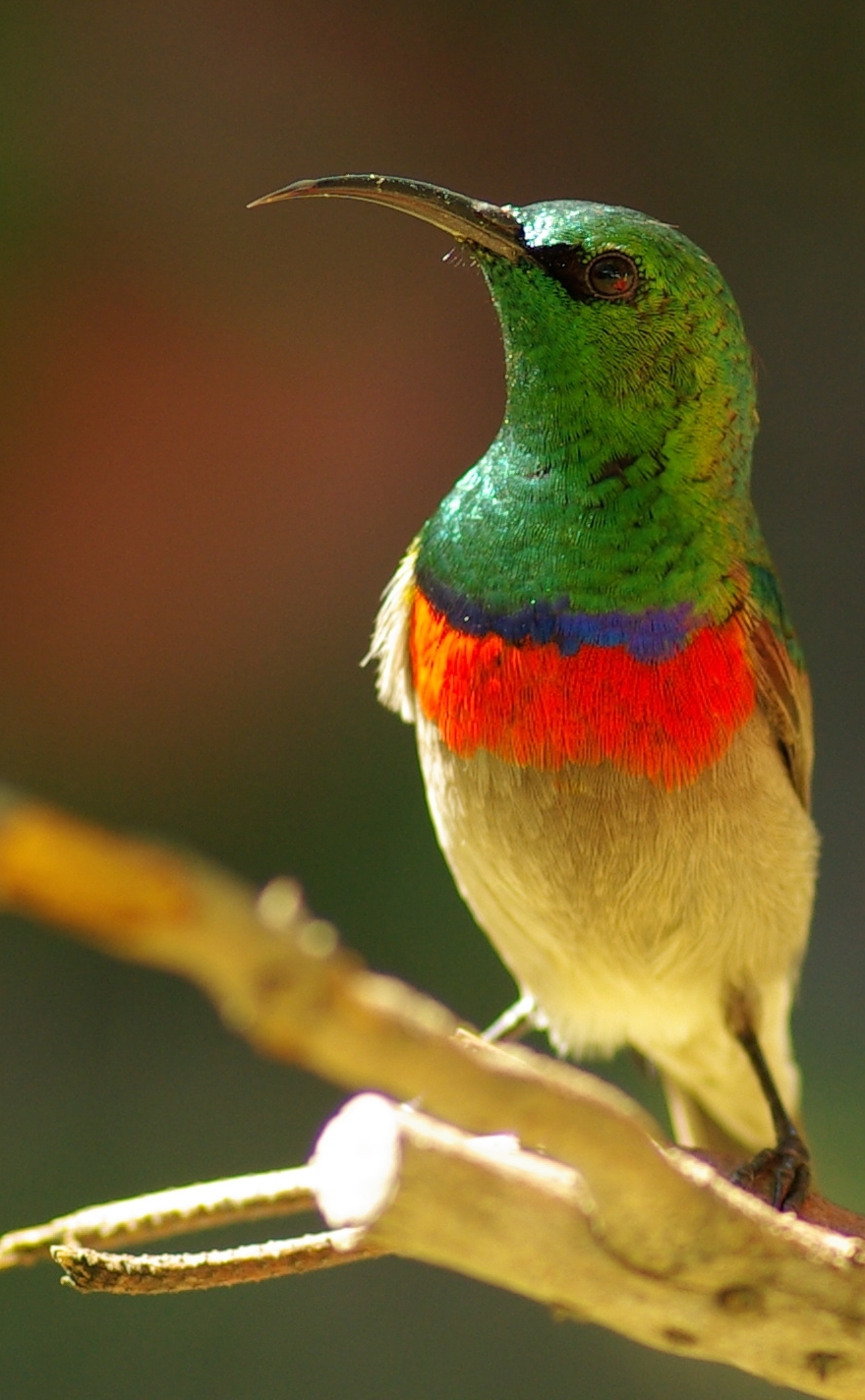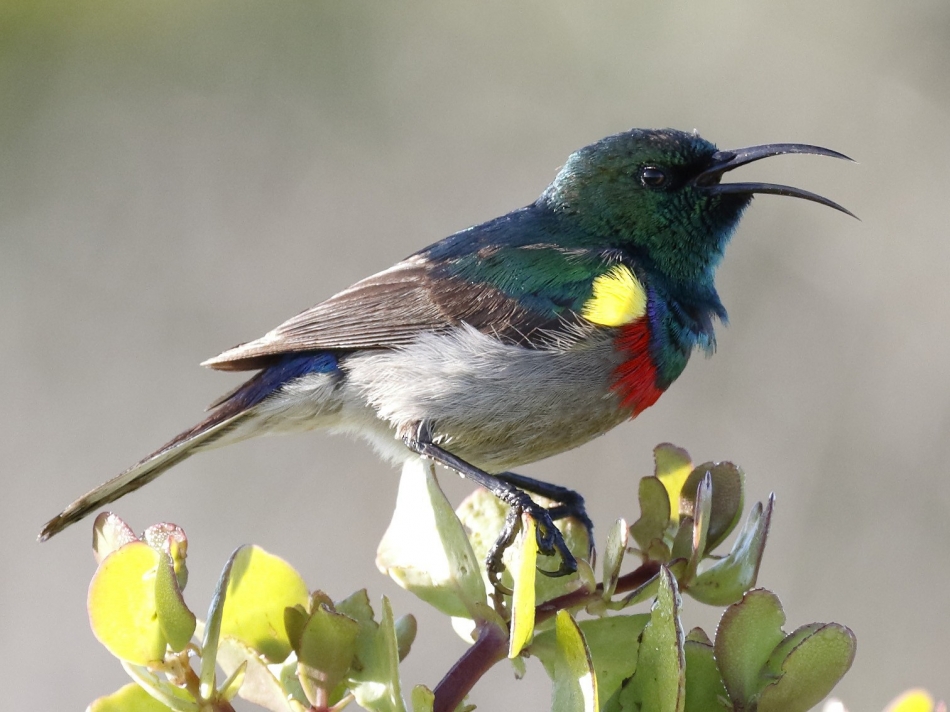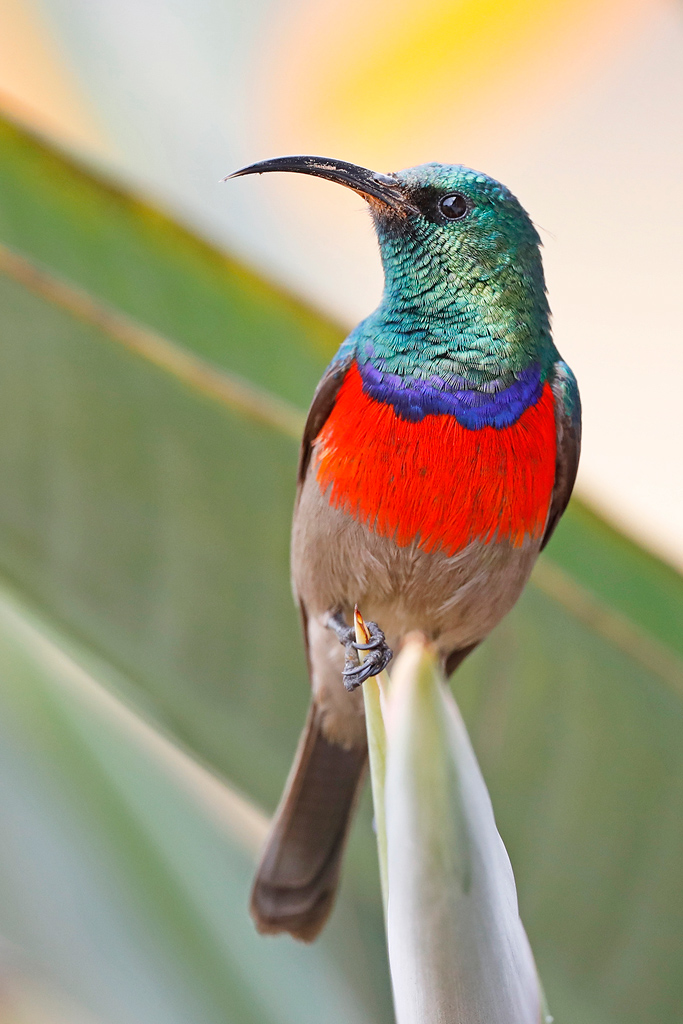Jewels of the Woods: Unveiling the Mesmerizing Southern Double-collared Sunbird
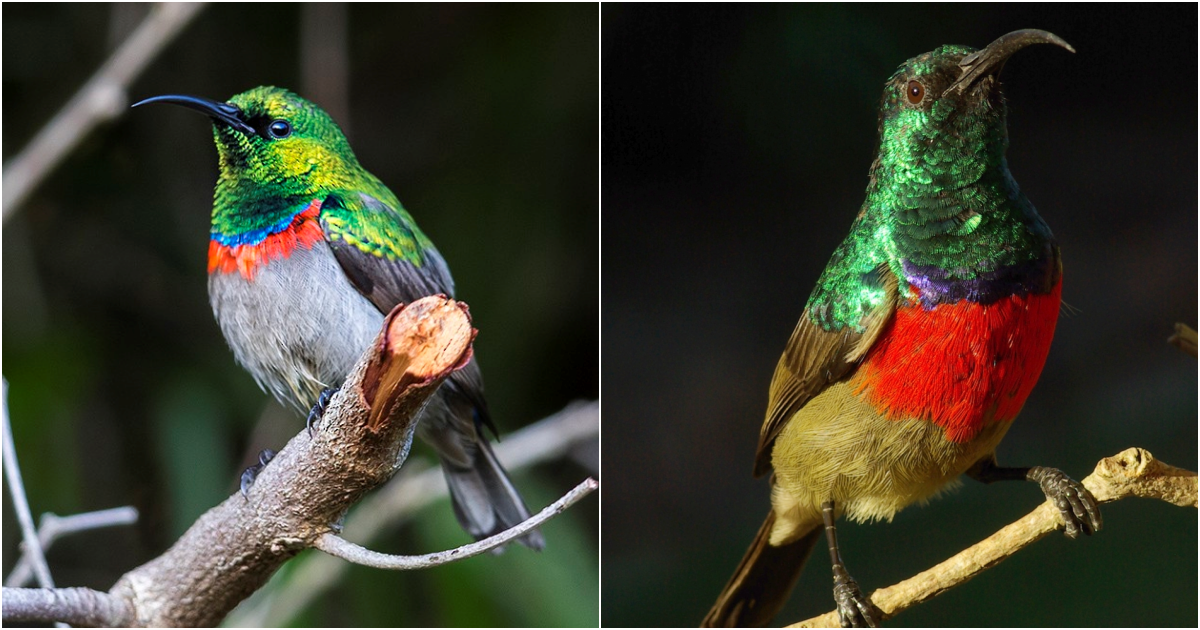
In the realm of the Old World, sunbirds hold a counterpart position to the hummingbirds of the Americas. These captivating creatures exhibit a remarkable palette of colors that glisten like jewels in the sunlight. Among these, the Southern Double-collared Sunbird stands out, showcasing its resplendent allure in the heart of woodlands.
The male Southern Double-collared Sunbird, measuring a mere 12 cm, presents a striking display with its glossy metallic green head, throat, upper breast, and back. A vivid red band spans its chest, adorned by a narrow metallic blue band that separates it from the green breast. The underparts remain white, while during displays, vibrant yellow feather tufts on its shoulders come into view. The long, elegantly curved bill, jet-black legs, and a dark brown eye further contribute to the bird’s overall charm.
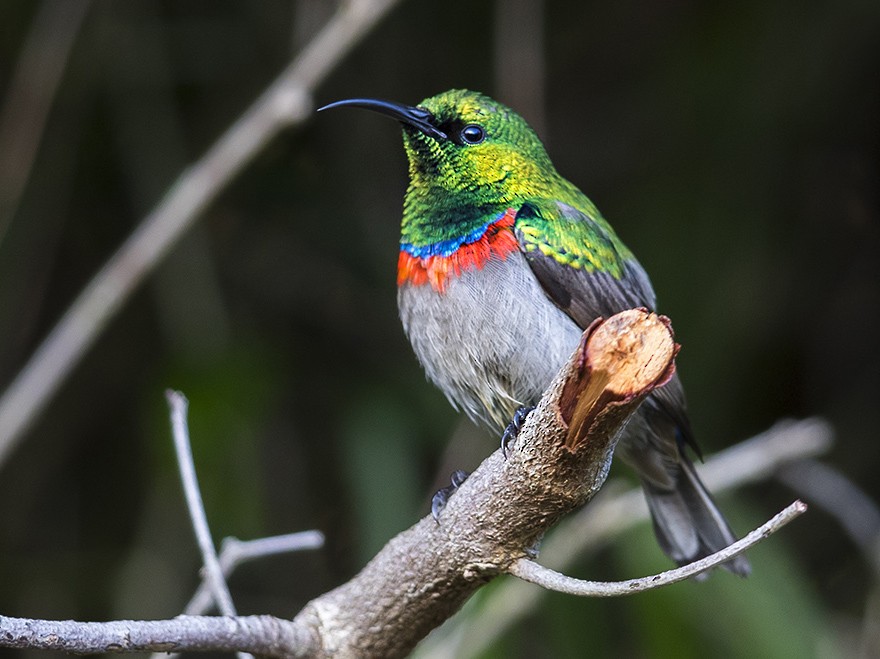
In the world of sunbirds, distinguishing the Southern Double-collared Sunbird from its larger relative, the Greater Double-collared Sunbird, is made effortless by its smaller stature, shorter bill, and narrower red chest band. The female of the species boasts brown upperparts and yellowish-grey underparts, while the juvenile closely resembles the female. Notably, when compared to the female Orange-breasted Sunbird, the female Southern Double-collared Sunbird exhibits a grayer underpart and a darker lower profile than the female Dusky Sunbird.
Often found alone or in small clusters, the Southern Double-collared Sunbird navigates through the air with swift, direct flights facilitated by its compact wingspan. While it predominantly feeds on nectar extracted from flowers, it diversifies its diet with fruits and occasionally indulges in insects and spiders, particularly when nurturing its young. Unlike the hovering feeding style of a hummingbird, this sunbird prefers to perch while feeding. Its distinctive call, a sharp “chee-chee,” resonates in the surroundings, while its song weaves a melodious tapestry of high-pitched tinkling notes that rise and fall in both pitch and tempo, lasting up to five seconds or even longer.
The Southern Double-collared Sunbird frequents an array of habitats, including gardens, fynbos, forests, and coastal scrublands. Its breeding season varies across regions but generally spans from April to December. Crafted from a medley of plant materials, such as grass and lichen, interwoven with spider silk, its nest assumes an oval shape and features a side entrance, sometimes accompanied by a porch. The interior is luxuriously lined with feathers, wool, and plant down.
While this species does not inhabit Lesotho, it thrives in the eastern regions of South Africa and parts of Swaziland. Particularly populous in the Upper Highway area, the Southern Double-collared Sunbird is fortunately not deemed endangered. A captivating facet of this avian marvel is the intriguing variation in its bill shape and size, which adapt to different types of flowers it feeds on for nectar. Scientists attribute this phenomenon to co-evolution, where two species undergo reciprocal genetic changes to develop mutually advantageous traits. 